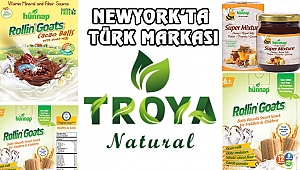Handmade Carpet and Kilims from Turkey and Beyond...
Gallery Rugs LLC tells us all: Shop with us in store or online and find that gorgeous one of a kind rug that best expresses your personal design aesthetic. We ethically source so our rugs are kilims are 100% handmade and we love that each rug expresses the weaver's personality, and her individual design story. Whether you prefer soft simple aesthetics, or embrace bold patterns and vibrant hues, you’ve come to the right place!

Esra Öziskender'in haberi:
Guide to Turkish Rugs & Carpets
What is a Turkish rug? Some people call rugs made after World War I Turkish and those made before Anatolian.
History
Turkish rugs are sought by collectors due to their rarity and unique artistic beauty. These pile-woven pieces provide elegant floor or wall coverage and stand the test of time in terms of style and craftsmanship. Over the centuries, cultural traditions and beliefs have been incorporated into the Turkish carpet to reflect the political history of the times. The oldest surviving pieces were woven during the 13th century. These elaborate creations featured several colors and were adorned with intricate geometrical or floral patterns.
Styles and Influences
Though influenced by the lavish kilims of Central Asia, Turkish rugs were made unique by the incorporation of symmetrical knots and animal motifs. The Ottomans borrowed from the Asian tradition of rug-making, perfecting stylized techniques in the cities of Konya, Kayseri, and Sivas. During the 15th century, the Turks refined the art of integrating animals into their designs. Classical rugs were created in the 16th century as the art of weaving boomed. Hues and motifs were chosen by palace artists, and then the work constructing these rungs was done at dedicated weaving centers. The tradition of Turkish rug making has survived to the present day in areas like Milas and Konya.
Sizes and Shapes
The size and shape of Turkish carpets varies dramatically. Reversible pieces used as pillow covers or tablecloths can measure as small as one square foot, prayer rugs are usually four by six feet, and room-sized rugs can cover an entire floor or wall. Large pieces have even been used in the past for covering animals or wagons during harsh outdoor treks. The bigger the Turkish rug, the more expensive and time-consuming it was to produce, which is why giant rugs are symbols of wealth.
Construction Materials
Most Turkish rugs are woven with high-quality wool, cotton, or silk. Traditional hand-spun sheep wool is excellent at retaining dyes, which is why several strands are often twisted together for superior strength. Cotton is used in the skeletal foundation of Turkish rugs, which is formed with vertical and horizontal weaves known as warps and wefts. Until the advent of modern synthetic pigments, minerals, plants, and animals were utilized as dyes. Patterns and pictures on the rug are made by weaving different colors of wool or silk within the cotton frame.
Please contact:
Gallery Rugs LLC
Yılmaz Yıldız
(917) 312-7512
[email protected]











YORUMLAR